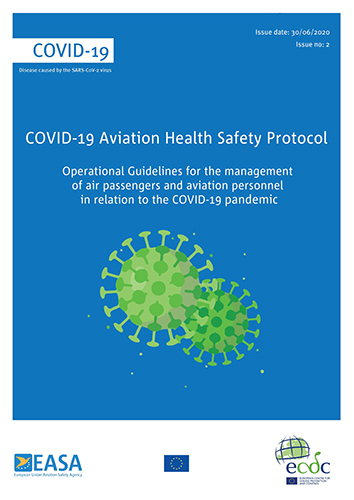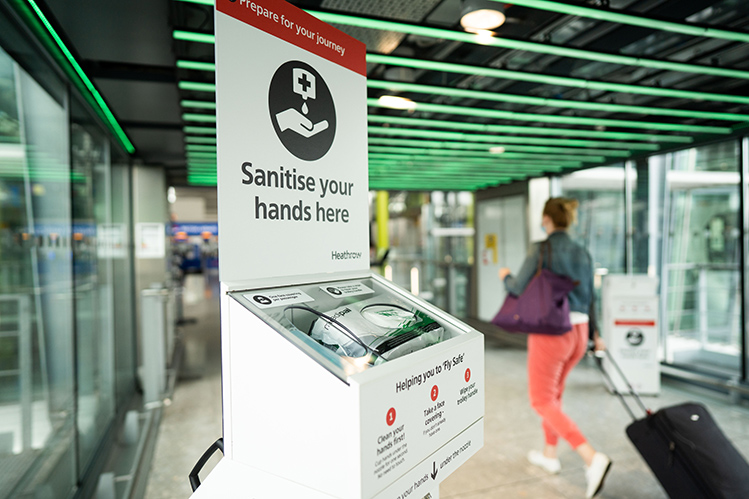Further to the release of the EASA/ECDC COVID-19 Aviation Health Safety Protocol, EASA has launched a programme to monitor its implementation. European airports and airlines representing around 40% of total European traffic have committed to give feedback on the performance of the health safety measures put in place by airports to restore safe air travel. How is the programme progressing and what are the learnings from it? Report by Ana Dedijer

Further to the release of the EASA/ECDC COVID-19 Aviation Health Safety Protocol, EASA has launched a programme to monitor its implementation.
On 20 May 2020, the European Union Aviation Safety Agency (EASA) and the European Centre for Disease Prevention and Control (ECDC), acting on the mandate from the European Commission in the context of its Guidelines on the progressive restoration of transport services and connectivity1, issued the COVID-19 Aviation Health Safety Protocol. The Protocol provides guidelines to assist the national competent authorities and the aviation industry in ensuring the safety of flights in the light of the COVID-19 pandemic. It is intended to facilitate coordination and coherence across the EU on matters of aviation health safety.
Less than a week afterwards, on 26 May 2020, EASA launched a programme to monitor the implementation of the Protocol. The programme established a collaboration platform between EASA and the airlines and airports who publicly pledge to adhere to the Protocol by signing the EASA COVID-19 Aviation Industry Charter. The Charter signatories commit to monitor the effectiveness of the recommendations implemented. They also agree to coordinate with the national competent authorities and with EASA and ECDC, if certain recommendations cannot be implemented, in order to develop alternative mitigating actions. In addition, on a weekly basis the Charter signatories provide a set of data which monitors:
- How passengers adhere to the guidelines and measures
- How airports and airlines react to passengers with suspected COVID-19 infections
- The rates of infected airline crew members and airport front-line personnel, and
- The waiting times at different points in airports to identify where physical distancing might not be maintained.
The programme currently comprises more than 100 airports and more than 50 airlines providing services across Europe and globally – capturing more than 45% of the European air traffic. It is a unique initiative designed to test the recommended measures in real life, to foster cross-border harmonisation and to gain an understanding of the actual situation on the ground and in the air. The programme owes its success to airports and airlines who overwhelmingly accepted EASA’s offer to work together – as well as to our partner associations. By providing valuable input and ensuring coordination on best practices among its members, ACI EUROPE in particular continues to render its strong support to the programme and to the implementation of the Protocol. Examples of complementary initiatives include ACI EUROPE’s Guidelines for a Healthy Passenger Experience at Airports as well as the ACI Airport Health Accreditation Programme, which facilitates the implementation of the measures recommended in the Protocol in a harmonised way.
By working closely together across the aviation community, we have already made a difference. The traffic analysed under the programme for the period July-September 2020 shows that the risks of COVID-19 transmission in-flight are effectively mitigated and are very limited where the health safety measures are implemented. On average, out of 2.5 million passengers carried weekly by the reporting airlines, 8 passengers showed COVID-19 symptoms during flight (this is 0.3 passengers per 100,000 passengers carried). This low number should be read together with the effects of the measures implemented on the ground: the monitored weekly airport traffic of around 6 million passengers shows that health screening measures at airports filter on departure on average 580 passengers (20 passengers per 100,000 served). We have also seen weeks in which more than 100 passengers were denied boarding due to COVID-19 compatible symptoms and more than 300 passengers were denied boarding or were reported due to non-adherence to the measures. As this is only a fraction of the total monitored traffic, it indicates that people who have symptoms in general do not travel and a vast majority of people who fly are adhering to the measures. Throughout the same period, the infection rates among airline and airport staff were very low and the dramatic increase in infection rates seen in the general public in the autumn has not been observed among airline crews and airport staff.

Complementary initiatives include ACI EUROPE’s Guidelines for a Healthy Passenger Experience at Airports as well as the ACI Airport Health Accreditation Programme, which facilitates the implementation of the measures recommended in the Protocol in a harmonised way.
The aviation industry has indisputably lived up to the challenge. And, while all European efforts are currently dedicated to managing the resurgence in COVID-19 cases, aviation remains in focus. In its recent communication2 on additional measures to reinforce the EU’s response to the crisis, the European Commission has set out next steps in key areas – and facilitating safe travel is one of them.
For air travel, it is important to underline that all the envisaged actions will build on the adherence to the measures recommended so far. Currently, the 14-day incidence of COVID-19 cases in the Member States is at record levels. It is therefore of utmost importance not to lower our guard and to focus on enhancing the harmonisation and the effective implementation of the Protocol.
The programme has already delivered significant benefits and it will evolve as the Protocol evolves, drawing its relevance from the size of its community and the quality of its output. At EASA, we remain committed to it and to our joint work with aviation industry and our partner regulators to facilitate the return to normal operations after this unprecedented crisis.
For further information, visit https://www.easa.europa.eu/aviation-industry-charter-covid-19
Ana Dedijer is Project Manager at EASA – EASA Programme to Monitor the Implementation of the EASA-ECDC COVID-19 Aviation Health Safety Protocol.







